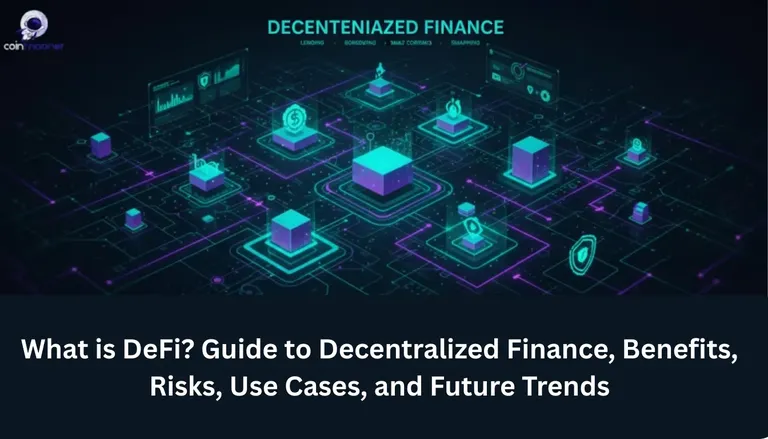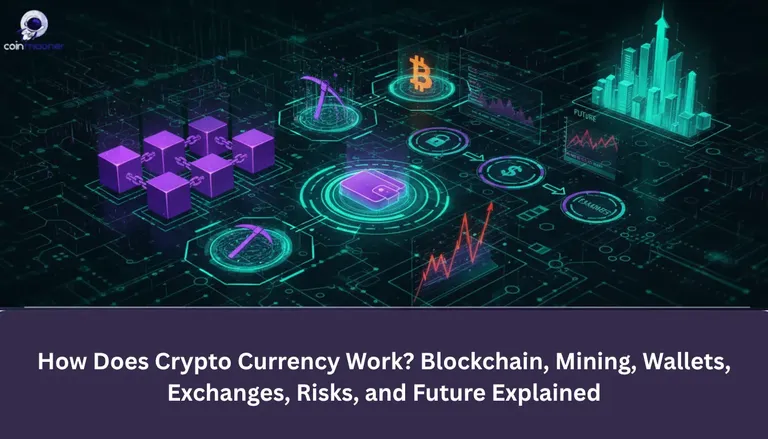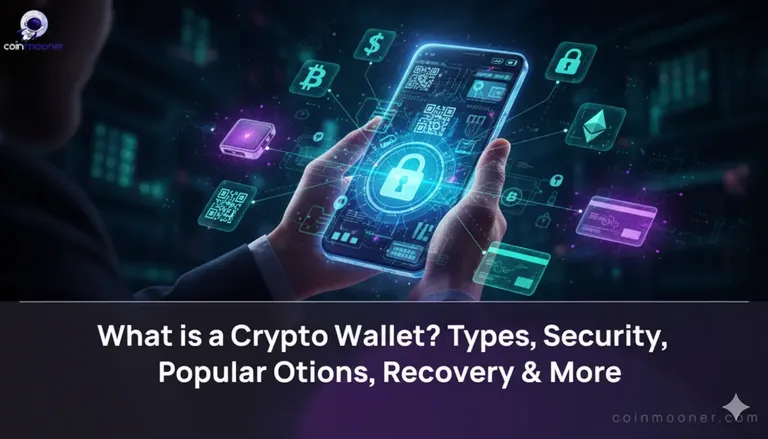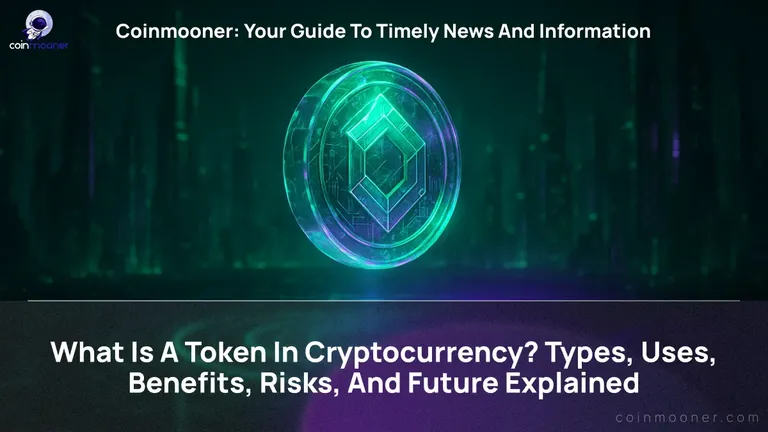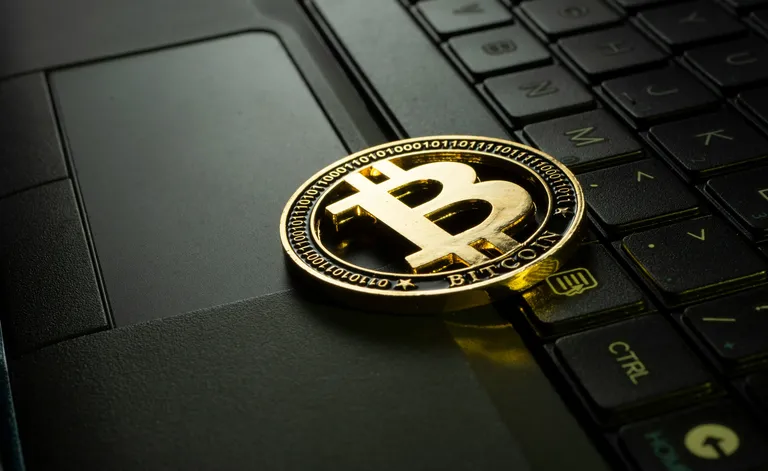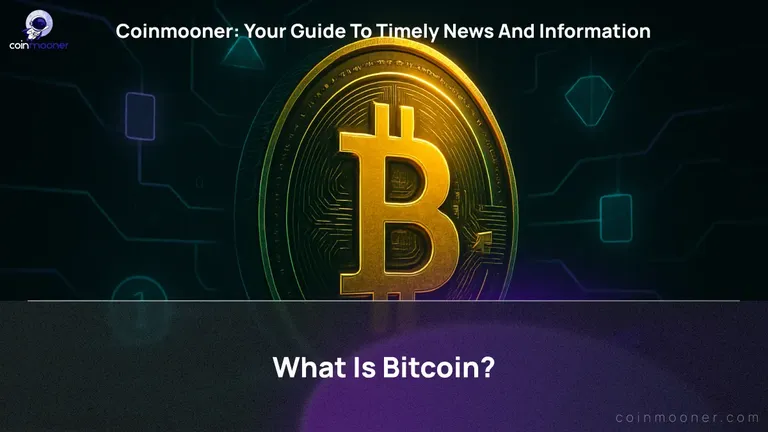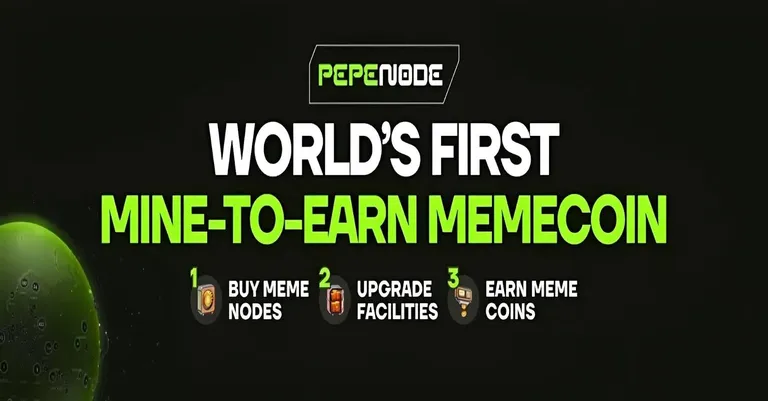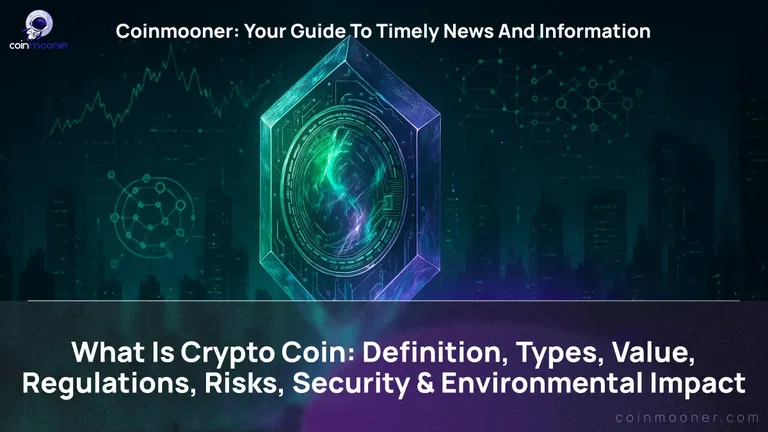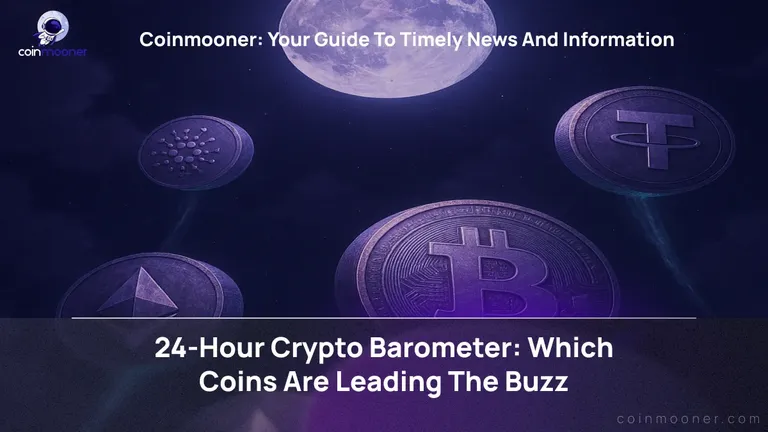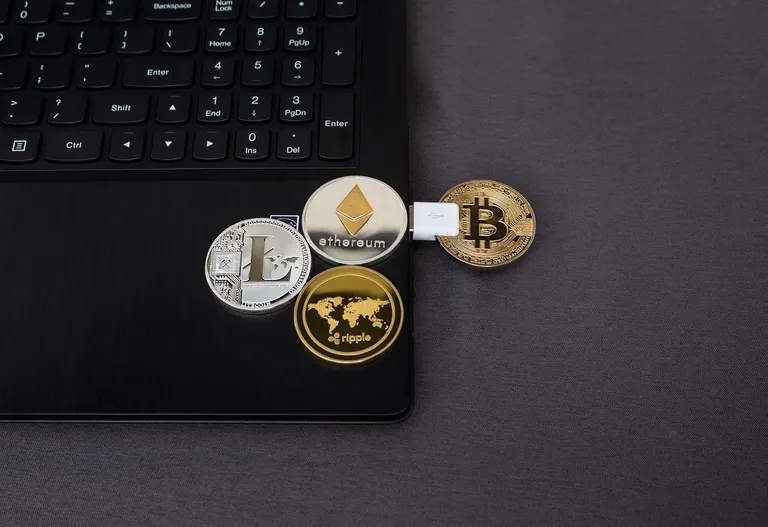What is a Token in Cryptocurrency? Types, Uses, Benefits, Risks, and Future Explained
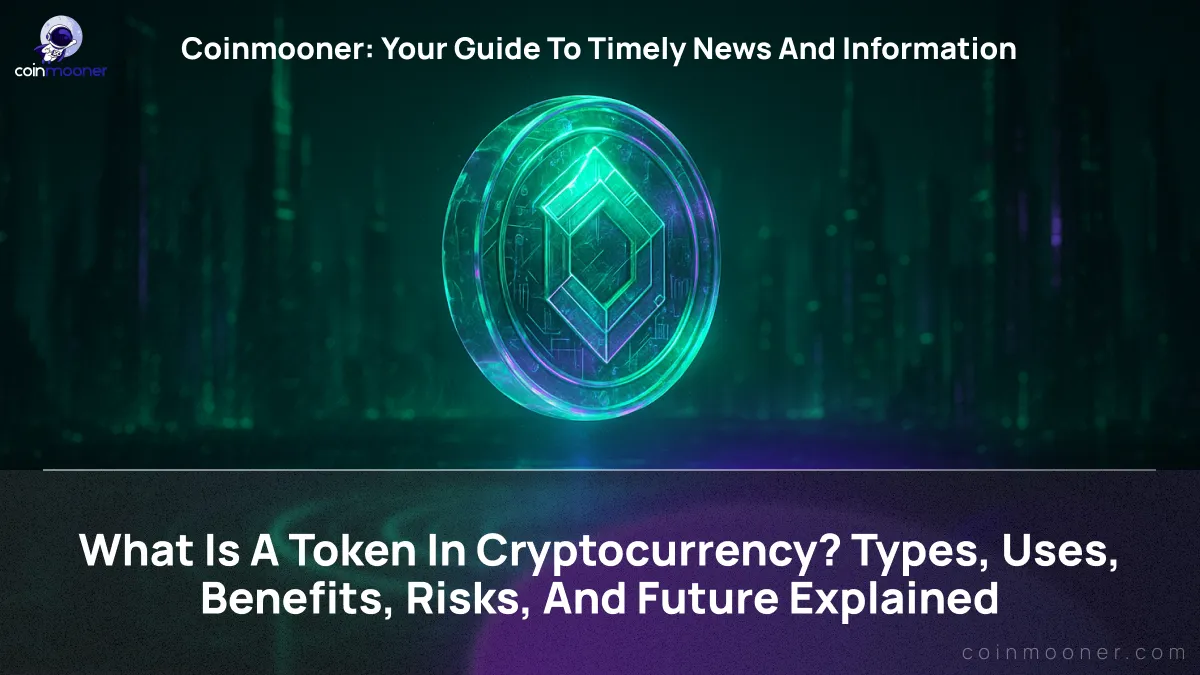
In cryptocurrency, the concept of a token is one of the most important building blocks of the digital economy. A token is not just another form of digital currency; it is a programmable asset created on existing blockchains such as Ethereum, Binance Smart Chain, or Solana. Unlike native coins like Bitcoin or Ether, which operate on their own blockchains, tokens are deployed using technical standards that define their rules, supply, and utility within a network. This makes them flexible instruments that can represent value, rights, access, or ownership across decentralized applications.
Tokens are at the heart of decentralized finance (DeFi), powering lending, borrowing, and yield-generating platforms. They enable governance mechanisms, allowing communities to vote on upgrades and protocol changes. They also extend into real-world applications through asset tokenization, where physical assets like real estate, stocks, or commodities are converted into digital tokens for fractional ownership and global accessibility. In addition, stablecoins provide price stability, NFTs redefine digital ownership, and security tokens bring regulated investment opportunities to blockchain markets.
The importance of tokens lies in their diversity. Utility tokens grant access to products and services, governance tokens allow decision-making, security tokens represent regulated assets, stablecoins reduce volatility, NFTs capture uniqueness, and asset-backed tokens bridge the gap between the physical and digital worlds. This wide spectrum shows how tokens are shaping payments, digital identity, metaverse economies, and global financial systems.
At the same time, tokens face challenges including regulatory uncertainty, market volatility, cybersecurity threats, and compliance requirements. These risks highlight the need for investors, developers, and institutions to carefully evaluate tokens based on their standards, use cases, and long-term viability.
As blockchain adoption accelerates worldwide, tokenbebs are no longer experimental tools, they are becoming a core layer of the digital asset ecosystem, transforming how value is stored, transferred, and governed in the new era of Web3.
What is a Token?
A token is a digital representation of value or rights that operates on top of an existing blockchain. Unlike native cryptocurrencies such as Bitcoin or Ethereum, which have their own independent blockchains, tokens depend on a host blockchain’s infrastructure, smart contracts, and consensus mechanisms to function. Tokens serve multiple purposes in blockchain ecosystems, including transferring value, representing ownership of assets, enabling governance rights, or granting access to specific services.
Tokens exist in multiple forms depending on their use cases. Utility tokens are designed to provide access to a product or service within a decentralized network, such as using Basic Attention Token (BAT) for transactions in the Brave browser ecosystem. Security tokens represent investment contracts and are regulated under securities law, often backed by real-world assets like stocks or real estate. Governance tokens such as MakerDAO’s MKR or Uniswap’s UNI allow holders to participate in decision-making processes within decentralized autonomous organizations (DAOs). Stablecoins, including Tether (USDT) and USD Coin (USDC), are pegged to fiat currencies like the US Dollar to minimize volatility and provide price stability for trading, lending, and payments.
Ethereum is the most widely used blockchain for tokens, where standards like ERC-20 define fungible tokens such as Chainlink (LINK) and Decentraland (MANA), while ERC-721 and ERC-1155 define non-fungible tokens (NFTs) used for digital art, gaming, and collectibles. Binance Smart Chain (BEP-20), Solana (SPL), and Avalanche (ARC-20) are other ecosystems where tokens are created and traded.
According to 2022 research from the University of Cambridge Centre for Alternative Finance, more than 1 million tokens were deployed on Ethereum alone, highlighting the role of tokens as the primary mechanism for creating decentralized applications, financial products, and digital assets. Tokens also form the foundation of decentralized finance (DeFi) platforms, play-to-earn games, non-fungible token marketplaces, and tokenized securities.
Tokens bridge the gap between blockchain networks and real-world value. By enabling fractional ownership, programmable money, and decentralized governance, tokens extend the functionality of blockchains beyond payment systems and establish a foundation for Web3 applications.
What is the Origin of Tokens?
The origin of tokens in cryptocurrency began with the development of blockchain standards that enabled the creation of digital assets on top of existing networks. Bitcoin, introduced in 2009, was the first blockchain-based cryptocurrency, but it was limited to peer-to-peer digital payments without token creation capabilities. The innovation that gave rise to tokens came with the launch of Ethereum in 2015, which introduced smart contracts, programmable agreements executed on the blockchain.
Ethereum’s ERC-20 standard, established in 2015 by developer Fabian Vogelsteller, was the first widely adopted token framework. ERC-20 allowed developers to create fungible tokens with uniform rules for transfer, approval, and balance tracking across wallets and decentralized applications (dApps). This standardization led to the first wave of Initial Coin Offerings (ICOs) between 2016 and 2018, where startups raised billions of dollars by issuing tokens to investors. According to a 2018 University of Pennsylvania Law School study, ICOs raised over $20 billion globally, proving the scalability of tokenized fundraising.
The evolution of token standards did not stop at ERC-20. The creation of ERC-721 in 2017 enabled non-fungible tokens (NFTs), which represent unique assets such as digital art, gaming characters, and real-world collectibles. ERC-1155, developed in 2018 by Enjin, introduced a multi-token standard supporting both fungible and non-fungible assets under a single contract. Other blockchains such as Binance Smart Chain with BEP-20, Solana with SPL, and Avalanche with ARC-20 followed Ethereum’s model, introducing their own token standards and expanding the token ecosystem.
The origin of tokens is therefore rooted in the transition from single-purpose cryptocurrencies to programmable digital assets. By allowing developers to issue their own assets on top of established blockchains, tokens unlocked decentralized finance (DeFi), decentralized autonomous organizations (DAOs), gaming economies, and tokenized real-world assets. Academic studies, such as those from the Massachusetts Institute of Technology (MIT) Digital Currency Initiative, highlight that the tokenization model accelerated blockchain adoption by enabling broader financial and non-financial applications beyond currency transfers.
How does a Token work?
A token works by using smart contracts on an existing blockchain to represent and transfer digital value, rights, or assets. Smart contracts are self-executing code deployed on a blockchain that define the creation, distribution, and movement of tokens across decentralized applications and wallets.
When a token is created, a developer writes a smart contract that specifies the total supply, divisibility, transfer rules, and ownership structure. For example, an ERC-20 token contract on Ethereum maintains a ledger of balances, verifies ownership before each transfer, and ensures that no more tokens can be issued beyond the defined supply. Every transaction is recorded on the blockchain, making token movements transparent, secure, and immutable.
Tokens operate differently depending on their type:
Fungible tokens such as USDC and DAI are interchangeable, meaning each unit has the same value as another unit.
Non-fungible tokens (NFTs) such as Bored Ape Yacht Club NFTs are unique, and the smart contract stores metadata that defines their distinct properties.
Governance tokens such as UNI or COMP provide voting rights in decentralized autonomous organizations (DAOs), where holders influence upgrades, treasury spending, and protocol rules.
Security tokens such as tokenized stocks are backed by real-world assets and grant rights like dividends or profit-sharing.
Tokens rely on the underlying blockchain’s consensus mechanism for validation. On Ethereum, tokens are secured through proof-of-stake (PoS), where validators confirm transactions. On Solana, tokens use a hybrid proof-of-history (PoH) and proof-of-stake model, enabling faster transaction speeds. These mechanisms guarantee that token transactions are decentralized and tamper-resistant.
Users interact with tokens through wallets, such as MetaMask or Trust Wallet, which manage private keys and interface with blockchains. Decentralized exchanges (DEXs) like Uniswap and PancakeSwap allow token swaps using automated market maker (AMM) models that pool liquidity from users. In decentralized finance (DeFi), tokens serve as collateral for loans, provide staking rewards, and generate yield through liquidity mining.
According to 2021 research from the University of Zurich Blockchain Center, more than 75% of decentralized applications rely on token-based mechanisms, demonstrating that tokens are the foundation of blockchain economies. Tokens work as programmable building blocks that extend blockchains beyond simple payments into ecosystems of finance, governance, and digital ownership.
What are the Standards of Tokens?
Token standards are predefined technical frameworks that define how tokens are created, transferred, and managed on a blockchain. Standards ensure compatibility between tokens, wallets, exchanges, and decentralized applications (dApps), making blockchain ecosystems interoperable and secure.
The most widely recognized token standards are associated with Ethereum, which pioneered programmable blockchain infrastructure:
ERC-20: Introduced in 2015, ERC-20 defines fungible tokens where each unit is interchangeable. Examples include Chainlink (LINK), Tether (USDT), and Decentraland (MANA). ERC-20 ensures standardized functions such as transfer, balance inquiry, and token approval.
ERC-721: Introduced in 2017, ERC-721 defines non-fungible tokens (NFTs) where each token is unique. Examples include CryptoKitties and Bored Ape Yacht Club NFTs. This standard allows storage of metadata, enabling token uniqueness.
ERC-1155: Developed by Enjin in 2018, ERC-1155 allows both fungible and non-fungible tokens to exist within a single smart contract. This standard reduces transaction costs for gaming and metaverse applications.
Other blockchains created their own token standards following Ethereum’s model:
BEP-20 on Binance Smart Chain defines fungible tokens such as PancakeSwap (CAKE).
SPL on Solana supports tokens like Serum (SRM) and Raydium (RAY).
TRC-20 on the TRON blockchain powers tokens like TRON-based USDT.
ARC-20 on Avalanche allows the creation of both utility and DeFi tokens.
According to a 2021 study from the National University of Singapore’s School of Computing, token standards significantly reduce integration complexity by establishing uniform functions and predictable behaviors, which are essential for scaling decentralized finance (DeFi) and NFT markets.
Token standards provide three critical benefits:
Interoperability – tokens can interact seamlessly across dApps and wallets.
Security – standardized rules minimize smart contract vulnerabilities.
Scalability – developers can deploy tokens faster without rewriting base logic.
The establishment of token standards transformed blockchains from isolated ledgers into multi-asset ecosystems, enabling the rise of decentralized finance, gaming economies, and Web3 marketplaces.
What are the Types of Tokens?
Tokens are categorized into different types based on their purpose, functionality, and the rights they provide to holders. Each token type plays a distinct role in blockchain ecosystems, ranging from payments and governance to asset representation and stability.
1. Utility Tokens
Utility tokens provide access to products or services within a blockchain ecosystem. They do not represent ownership or investment rights but are designed to be used as a medium of exchange inside decentralized platforms.
Examples:
Basic Attention Token (BAT): Rewards users and advertisers on the Brave browser.
Filecoin (FIL): Used for decentralized file storage and retrieval.
Chainlink (LINK): Provides decentralized oracle services to smart contracts.
2. Security Tokens
Security tokens represent investment contracts backed by real-world assets such as equities, bonds, or real estate. They are regulated under securities laws and often grant profit-sharing rights, dividends, or voting privileges.
Examples:
tZERO (TZROP): A regulated tokenized equity platform in the U.S.
Securitize Tokens: Tokenized shares issued by companies for compliant fundraising.
Polymath (POLY): A platform designed for creating and managing security tokens.
3. Governance Tokens
Governance tokens give holders voting rights in decentralized autonomous organizations (DAOs) and DeFi protocols. These tokens allow users to propose and vote on upgrades, treasury allocations, and protocol rules.
Examples:
Uniswap (UNI): Grants voting power in the Uniswap decentralized exchange.
MakerDAO (MKR): Governs the DAI stablecoin system.
Aave (AAVE): Used for governance decisions in the Aave lending protocol.
4. Stablecoins
Stablecoins are tokens pegged to stable assets such as the U.S. Dollar, Euro, or gold. Their purpose is to reduce volatility and provide price stability for trading, payments, and lending.
Examples:
Tether (USDT): Pegged 1:1 to the U.S. Dollar.
USD Coin (USDC): A regulated, dollar-backed stablecoin.
DAI: An algorithmic stablecoin collateralized by crypto assets.
5. Non-Fungible Tokens (NFTs)
Non-fungible tokens (NFTs) represent unique digital assets with individual identifiers and metadata. They are not interchangeable, making them suitable for digital art, collectibles, gaming assets, and metaverse land ownership.
Examples:
CryptoPunks: One of the earliest NFT avatar collections.
Bored Ape Yacht Club (BAYC): A high-value NFT series tied to digital identity and community membership.
Decentraland Land NFTs: Tokenized virtual real estate within the metaverse.
6. Asset-Backed Tokens
Asset-backed tokens are digital representations of physical or financial assets. These include tokenized commodities, securities, and real estate projects that enable fractional ownership.
Examples:
Paxos Gold (PAXG): A token backed by physical gold reserves.
RealT Tokens: Tokenized real estate properties that distribute rental income.
Tether Gold (XAUT): A stablecoin backed by physical gold.
According to a 2022 report from the European Central Bank (ECB), the rise of token types demonstrates the shift of blockchain technology from a payment-focused system to a multi-asset infrastructure supporting finance, governance, and digital ownership.
What is the Difference between Coins and Tokens?
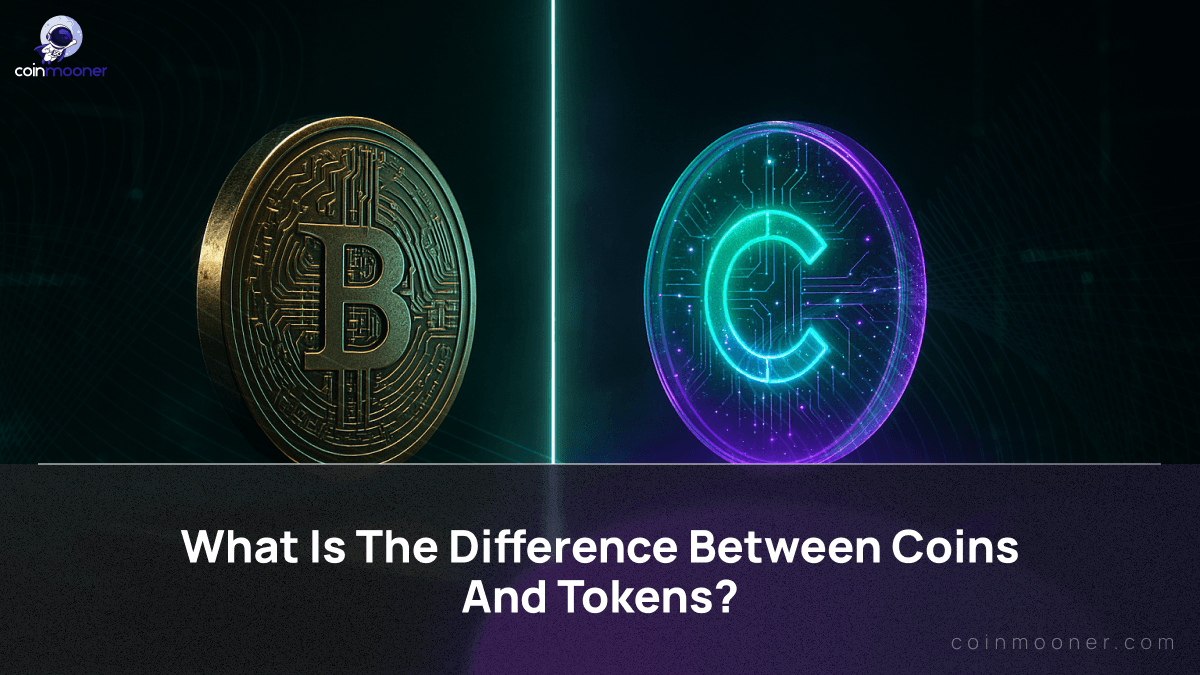
The difference between coins and tokens lies in their infrastructure and use cases. Coins are native digital currencies that operate on their own blockchain, while tokens are digital assets built on top of an existing blockchain through smart contracts.
Coins
Coins are cryptocurrencies that have their own independent blockchain. They function primarily as a medium of exchange, a store of value, and in some cases, a unit of account. Coins are essential for securing their networks, paying transaction fees, and incentivizing validators or miners.
Examples: Bitcoin (BTC) on the Bitcoin blockchain, Ether (ETH) on Ethereum, and Solana (SOL) on Solana.
Use cases: Peer-to-peer payments, settlement layers, staking, and powering decentralized applications.
Tokens
Tokens are digital assets issued on existing blockchains through token standards and smart contracts. They do not have independent blockchains but rely on the security and consensus of their host networks.
Examples: Tether (USDT) on Ethereum (ERC-20) and Tron (TRC-20), Chainlink (LINK) on Ethereum, and PancakeSwap (CAKE) on Binance Smart Chain.
Use cases: Governance rights, stable payments, DeFi lending, in-game assets, NFTs, and tokenized securities.
Key Distinctions
Blockchain Infrastructure: Coins operate on their own chains, while tokens depend on another blockchain.
Creation: Coins require building a blockchain, whereas tokens can be created quickly via smart contracts.
Function: Coins are mainly currencies for payments and network fees; tokens expand utility by representing assets, rights, or services.
Examples: Bitcoin = coin; USDT = token.
According to 2021 research from the University of Cambridge Centre for Alternative Finance, over 70% of active blockchain projects issue tokens instead of building standalone coins, as token deployment is faster, cheaper, and more versatile.
Coins provide the foundation of blockchain ecosystems, while tokens extend those ecosystems with applications in finance, governance, and digital ownership.
Difference between Coins and Tokens | ||
Aspect | Coins | Tokens |
Blockchain | Operate on their own independent blockchain. | Built on existing blockchains via smart contracts. |
Creation | Require developing and maintaining a full blockchain. | Created easily using token standards (ERC-20, BEP-20, SPL). |
Function | Serve as digital money, network fee payment, and value storage. | Represent assets, rights, utilities, or unique digital items. |
Examples | Bitcoin (BTC), Ethereum (ETH), Solana (SOL). | Tether (USDT), Chainlink (LINK), Uniswap (UNI), Bored Ape Yacht Club NFTs. |
Security | Secured by their native blockchain’s consensus (PoW, PoS, etc.). | Secured by the host blockchain’s consensus mechanism. |
Use Cases | Peer-to-peer payments, staking, powering decentralized applications. | DeFi, governance, NFTs, stable payments, tokenized real-world assets. |
What are the Uses of Tokens?
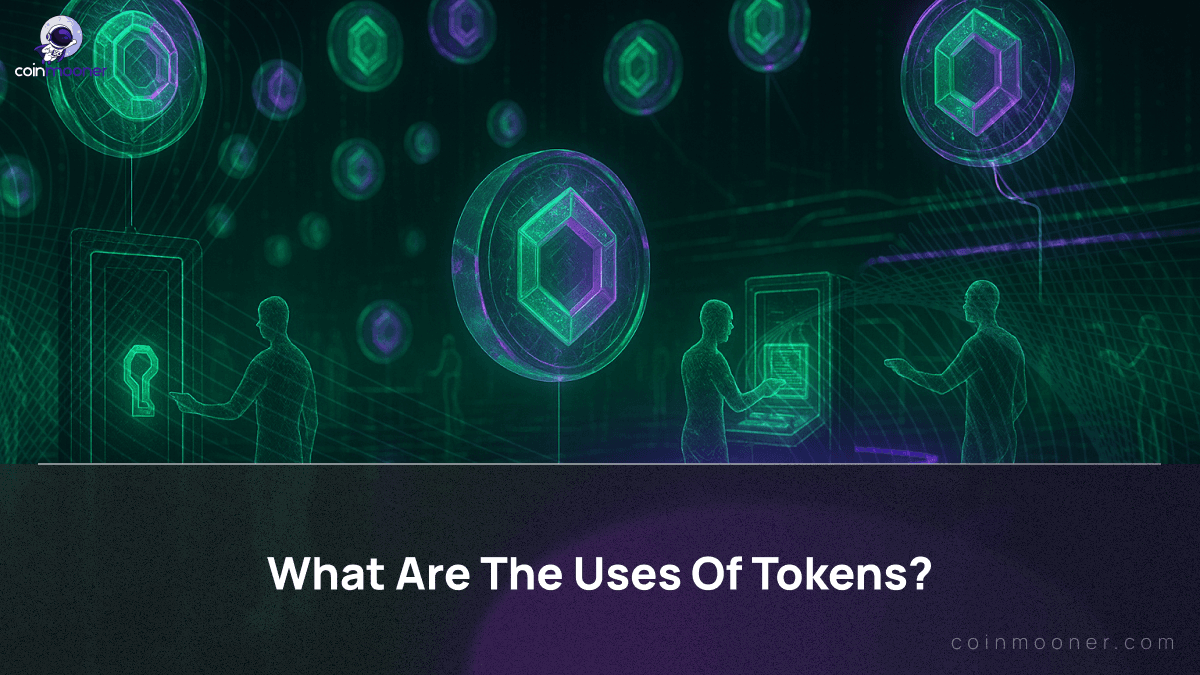
Tokens are versatile digital assets that extend the functionality of blockchains beyond basic payments. They enable access, ownership, governance, and liquidity in decentralized systems, making them central to the growth of Web3 and decentralized finance (DeFi).
1. Payments and Transactions
Tokens can be used as a medium of exchange within blockchain ecosystems. Stablecoins such as USDT and USDC are widely used for cross-border payments and remittances, offering faster settlement and lower fees compared to traditional banking.
2. Governance and Voting
Governance tokens like UNI (Uniswap) and COMP (Compound) give holders the right to propose and vote on protocol changes. This creates decentralized decision-making where communities, rather than corporations, control the rules of the ecosystem.
3. Access to Services
Utility tokens provide access to products or services. For example, BAT (Basic Attention Token) rewards users for viewing ads within the Brave browser, while Filecoin (FIL) grants storage rights in a decentralized file system.
4. Fundraising and Crowdfunding
Tokens are frequently used for fundraising through Initial Coin Offerings (ICOs), Security Token Offerings (STOs), or Initial Exchange Offerings (IEOs). Startups issue tokens to raise capital from global investors without intermediaries.
5. Decentralized Finance (DeFi)
Tokens fuel DeFi platforms by acting as collateral, lending instruments, or liquidity provider incentives. For instance, DAI, a decentralized stablecoin, is used across lending protocols like MakerDAO and Aave. Liquidity mining programs also reward users with governance tokens for contributing liquidity.
6. Gaming and Metaverse Assets
In blockchain gaming and metaverse platforms, tokens represent in-game currencies, items, and virtual land. Axie Infinity’s SLP token is used for gameplay rewards, while Decentraland’s MANA token enables the purchase of virtual real estate.
7. Tokenization of Real-World Assets
Tokens can represent ownership of real-world assets such as real estate, gold, or stocks. For example, Paxos Gold (PAXG) is a token backed by physical gold, while several projects explore tokenized real estate, enabling fractional property investment.
8. Identity and Certification
Some tokens serve as proof of identity or digital certification. Soulbound tokens (SBTs), introduced by Ethereum co-founder Vitalik Buterin, are non-transferable tokens designed to represent credentials, achievements, or memberships.
According to a 2022 report by PwC Global Crypto Outlook, tokenized assets and DeFi tokens are expected to represent a multi-trillion-dollar market by 2030, highlighting their growing role in both digital and traditional economies.
What are the Benefits of Tokens?
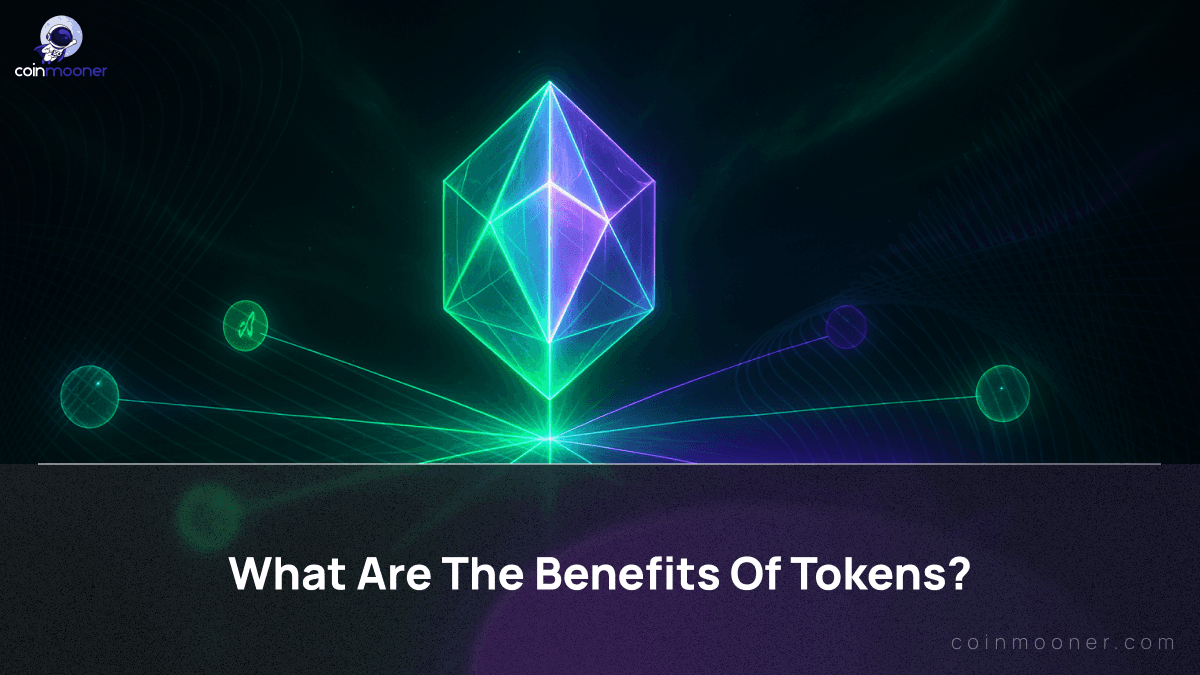
Tokens bring efficiency, accessibility, and innovation to the digital economy. By representing value, rights, or assets on blockchain networks, tokens create new opportunities for individuals, businesses, and developers worldwide.
1. Accessibility and Inclusion
Tokens lower barriers to entry by enabling anyone with an internet connection to participate in digital economies. A person in any part of the world can invest in tokenized assets, join DeFi platforms, or access services without going through traditional financial intermediaries.
2. Liquidity and Fractional Ownership
Tokens enable fractional ownership of assets such as real estate, artwork, or commodities. This means that high-value assets can be divided into smaller tradable units, increasing liquidity and allowing broader participation from retail investors.
3. Transparency and Security
Because tokens operate on blockchains, all transactions are recorded on immutable ledgers, ensuring transparency and reducing fraud. Users can track token flows in real time, while security is maintained through decentralized consensus mechanisms.
4. Programmability
Tokens are powered by smart contracts, which allow automation of functions such as staking, rewards, lending, or voting. This programmability reduces human intervention, minimizes errors, and enables trustless interactions.
5. Cost Efficiency
By cutting out intermediaries, tokens reduce costs for cross-border transfers, fundraising, and asset trading. For example, stablecoin transfers often settle within seconds at a fraction of the fees charged by banks and remittance companies.
6. Global Reach
Tokens are borderless digital assets. They can be transferred across countries in real time, enabling faster international commerce, global investment opportunities, and decentralized collaboration without relying on traditional banking infrastructure.
7. Innovation and New Business Models
Tokens enable entirely new industries and economic models, such as decentralized finance (DeFi), play-to-earn gaming, metaverse marketplaces, and decentralized autonomous organizations (DAOs). These innovations empower communities and open new revenue streams for developers.
8. Governance and User Empowerment
Through governance tokens, communities gain a voice in protocol development. This promotes decentralization and aligns incentives between project teams and users, creating stronger ecosystems driven by collective decision-making.
A 2023 report by Deloitte on tokenization emphasized that token benefits extend far beyond cryptocurrency trading, they have the potential to reshape supply chains, financial markets, real estate, and digital identity management.
What are the Risks of Tokens?
Tokens carry significant risks alongside their benefits. These risks come from technology, regulation, market volatility, and security challenges that can impact investors, developers, and users.
1. Regulatory Uncertainty
Governments across the world classify tokens differently. Some tokens are treated as securities, while others fall under payment or utility categories. Lack of clear regulations exposes token projects and holders to legal disputes, compliance costs, or outright bans.
2. Market Volatility
Token prices can swing dramatically within minutes. Even stablecoins, which are pegged to assets like the U.S. Dollar, have faced de-pegging incidents. For example, TerraUSD (UST) collapsed in 2022, wiping out billions of dollars in market value.
3. Security Vulnerabilities
Tokens depend on smart contracts, which can contain bugs or exploitable loopholes. Hackers have stolen hundreds of millions of dollars from token-based DeFi protocols, such as the $600 million Poly Network exploit in 2021.
4. Fraud and Scams
Because token creation is simple, bad actors launch fraudulent projects, rug pulls, and pump-and-dump schemes. According to Chainalysis 2022 Crypto Crime Report, over $2.8 billion was lost in rug pulls alone, with most involving tokens on decentralized exchanges.
5. Lack of Liquidity
Not all tokens have active markets. Illiquid tokens can trap investors, making it hard to sell holdings without major price slippage. Low liquidity also makes tokens more vulnerable to manipulation by whales or coordinated trading groups.
6. Dependency on Host Blockchain
Tokens rely on the stability and security of their underlying blockchain. If the host network suffers congestion, downtime, or governance disputes, the tokens built on it face direct consequences.
7. Limited Lifespan of Projects
Many tokens are tied to startups or experimental projects that may fail. When the project shuts down, the token often loses its utility and value, leaving holders with worthless assets.
8. Privacy Risks
While tokens benefit from transparency, public ledgers expose transaction histories. This can create risks of surveillance or tracking if proper privacy protections are not implemented.
A 2023 World Economic Forum report on digital assets noted that over 90% of token projects launched in ICOs between 2017 and 2019 are now inactive, underscoring the high-risk environment of token investments.
How are Tokens Created?
Tokens are created through smart contracts deployed on existing blockchains. Instead of building a new blockchain from scratch, developers use token standards such as ERC-20 (Ethereum) or BEP-20 (Binance Smart Chain) to design and launch digital assets quickly.
1. Choosing a Blockchain
The first step is selecting a blockchain that supports token creation. Ethereum, Binance Smart Chain, Solana, and Polygon are popular choices because they provide robust smart contract frameworks and active developer communities.
2. Writing a Smart Contract
Developers create a smart contract that defines the token’s characteristics, including:
Name and Symbol (e.g., USDT, UNI).
Total Supply (fixed or inflationary).
Decimal Places (to determine divisibility).
Functions such as transfer, burn, mint, or freeze.
For example, most Ethereum tokens follow the ERC-20 standard, which defines a common set of functions for compatibility with wallets and exchanges.
3. Deploying the Smart Contract
Once coded, the smart contract is deployed on the chosen blockchain. Deployment requires paying a gas fee in the blockchain’s native currency (e.g., ETH on Ethereum). After deployment, the token exists permanently on the blockchain.
4. Token Distribution
Newly created tokens are distributed through different models:
Initial Coin Offering (ICO): Tokens sold to raise funds.
Airdrops: Free tokens distributed to wallet addresses for marketing or community building.
Liquidity Mining: Tokens rewarded to users for contributing to DeFi liquidity pools.
5. Listing and Integration
After creation, tokens can be listed on exchanges (centralized or decentralized) to enable trading. Developers also integrate tokens into wallets, DeFi platforms, or gaming ecosystems to provide real-world use cases.
6. Security Audits
Professional audits are conducted to test smart contracts for vulnerabilities before large-scale distribution. Without audits, tokens are prone to hacks and exploits, risking user funds and credibility.
A 2022 report by Consensys Diligence found that over 50% of audited token projects contained at least one critical smart contract vulnerability, highlighting the importance of security in token creation.
Token creation is a structured process involving blockchain selection, smart contract coding, deployment, and distribution. It combines technology and economics to introduce new digital assets into blockchain ecosystems.
How are Tokens Stored?
Tokens are stored in cryptocurrency wallets that support the blockchain on which they are issued. A wallet secures ownership of tokens through private keys and allows users to send, receive, and manage digital assets across decentralized networks.
Types of Token Wallets
Hot Wallets – Internet-connected wallets such as MetaMask, Trust Wallet, or Phantom. They provide instant access for trading, DeFi, and dApps but are more exposed to phishing, malware, and hacks.
Cold Wallets – Offline storage devices like Ledger Nano X or Trezor Model T. They offer maximum security for long-term holding of ERC-20, BEP-20, and other token standards.
Custodial Wallets – Exchange-managed wallets on platforms like Coinbase or Binance. They simplify trading but expose users to counterparty risk if the exchange becomes insolvent or suffers a breach.
Blockchain Compatibility
ERC-20 tokens (Ethereum) require Ethereum-compatible wallets.
BEP-20 tokens (Binance Smart Chain) require BSC-enabled wallets.
SPL tokens (Solana) require Solana wallets such as Phantom.
Sending tokens to an incompatible wallet results in permanent loss.
Security Layers
Private Keys and Seed Phrases: Control token ownership. Loss of keys means loss of tokens.
Multi-Signature Wallets: Require multiple approvals before transactions, improving institutional security.
Smart Contract Wallets: Add programmable features like spending limits and recovery mechanisms.
Risks in Token Storage
Loss of private keys or seed phrases permanently removes access.
Hot wallets face phishing and malware risks.
Custodial wallets can freeze withdrawals, as seen during the FTX collapse in 2022 when billions in token assets became inaccessible.
Best Practices
Use hardware wallets for high-value token storage.
Enable 2FA on custodial accounts.
Verify blockchain compatibility before transfers.
Keep seed phrase backups offline in secure locations.
A 2023 Ledger survey reported that over 70% of cryptocurrency holders use hardware wallets for token storage, reflecting a strong shift toward decentralized self-custody.
Token storage depends on blockchain-compatible wallets, private key security, and best practices that balance accessibility with protection.
How are Tokens Traded?
Tokens are traded through centralized exchanges (CEXs) and decentralized exchanges (DEXs) that match buyers and sellers using blockchain-based settlement. Trading involves transferring tokens between wallets with transaction validation recorded on the host blockchain.
Centralized Exchange Trading
Platforms: Binance, Coinbase, Kraken.
Mechanism: Orders are placed on an order book where the exchange matches buyers and sellers.
Custody: Tokens are held in exchange-controlled wallets until withdrawal.
Advantages: High liquidity, fiat-to-token trading pairs, advanced tools such as margin and futures.
Risks: Counterparty risk, withdrawal freezes, and exchange hacks.
Decentralized Exchange Trading
Platforms: Uniswap, PancakeSwap, Curve.
Mechanism: Tokens are swapped directly through liquidity pools governed by automated market maker (AMM) algorithms.
Custody: Traders retain control of tokens in non-custodial wallets such as MetaMask.
Advantages: Censorship resistance, transparency, 24/7 availability.
Risks: Smart contract exploits, liquidity slippage, and impermanent loss for liquidity providers.
Peer-to-Peer Trading
Direct transfers between wallets using smart contracts or escrow services.
Common in over-the-counter (OTC) markets for large token transactions.
Useful for illiquid tokens not listed on exchanges.
Trading Pairs and Standards
Tokens are usually traded against native coins (ETH, BNB, SOL) or stablecoins (USDT, USDC, DAI).
ERC-20 and BEP-20 standards ensure compatibility across wallets and exchanges, reducing settlement friction.
Risks in Token Trading
Market volatility creates rapid price swings.
Front-running bots manipulate trades on DEXs.
Regulatory scrutiny affects token availability on CEXs.
Trading Volume and Adoption
According to CoinMarketCap 2023 data, daily token trading volume on DEXs surpassed $2 billion, showing the growing preference for decentralized trading models compared to centralized custody.
Tokens are traded via CEXs, DEXs, and P2P mechanisms, with security, liquidity, and control determined by the trading infrastructure chosen.
How to Evaluate a Token before Investing?
A token is evaluated before investing by analyzing its utility, tokenomics, project fundamentals, market performance, and security factors. Proper evaluation reduces exposure to high-risk or fraudulent projects in the cryptocurrency market.
1. Utility and Use Case
Determine whether the token has a clear function within its ecosystem.
Examples include governance (UNI), transaction fees (BNB), stable value (USDT), or access to DeFi services.
Tokens without defined utility often lack long-term value.
2. Tokenomics
Supply Model: Check whether the token has a fixed or inflationary supply.
Distribution: Review how tokens are allocated among the team, investors, and community.
Incentives: Evaluate staking rewards, burn mechanisms, or liquidity incentives.
3. Project Fundamentals
Team and Development: Strong developer activity and transparent leadership increase credibility.
Roadmap: Milestones and continuous updates indicate long-term commitment.
Partnerships: Collaborations with established platforms or protocols add legitimacy.
4. Market Metrics
Market Capitalization: Reflects overall valuation and growth potential.
Liquidity: High liquidity ensures tokens can be bought or sold without heavy slippage.
Trading Volume: Consistent trading activity signals real demand.
5. Security and Transparency
Review whether the token smart contract has undergone independent audits.
Check for decentralized governance structures instead of centralized control.
Identify risks such as rug pulls, where developers drain liquidity pools.
6. Regulatory Compliance
Tokens with regulatory recognition or alignment are less likely to face delistings.
Compliance is critical for tokens operating in financial or security-like markets.
Evaluating a token requires examining its utility, tokenomics, fundamentals, market data, security practices, and regulatory outlook to assess long-term investment viability.
What are the Rules and Regulations of Tokens?
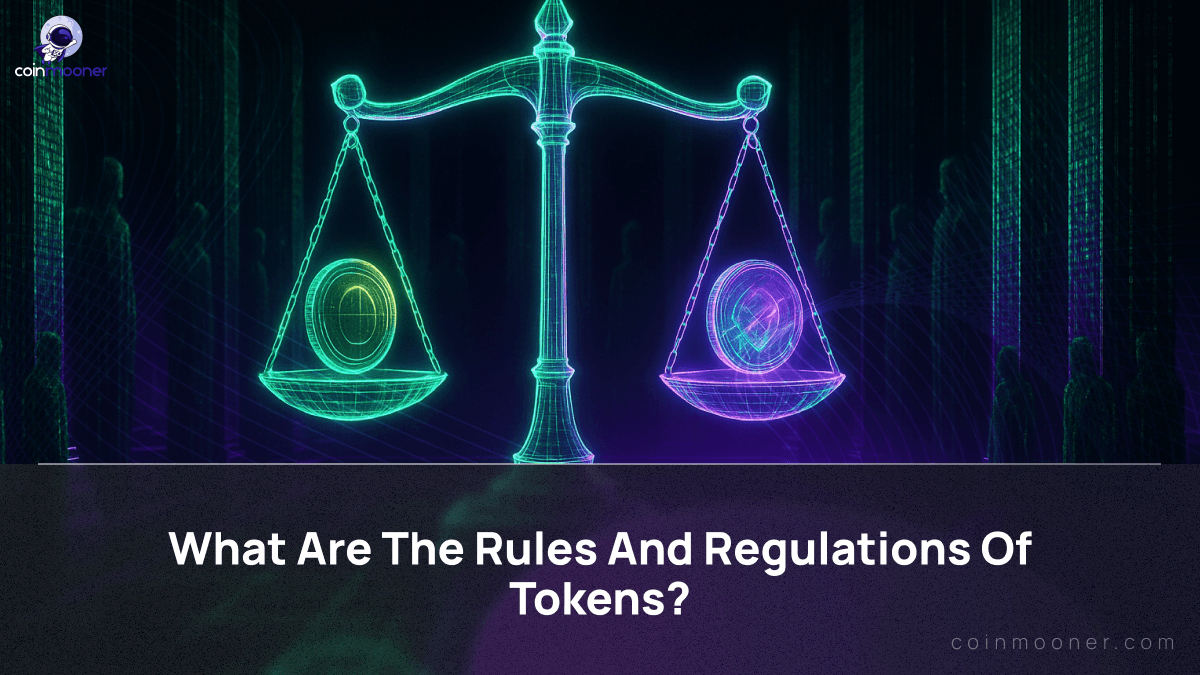
The rules and regulations of tokens define how they are classified, issued, traded, and monitored under financial and securities laws across different jurisdictions. These regulations focus on investor protection, anti-money laundering (AML), taxation, and maintaining fair market practices.
1. Classification Rules
Security Tokens: Treated as investment contracts, subject to securities laws. In the United States, the SEC applies the Howey Test to determine if a token qualifies as a security.
Utility Tokens: Used for accessing blockchain services; often exempt from securities regulation but may still fall under consumer protection and AML rules.
Payment Tokens: Used as a medium of exchange and subject to payment service regulations.
Stablecoins: Pegged to assets such as the US dollar; regulated under banking, e-money, and payment settlement laws.
2. Issuance and Fundraising Rules
Initial Coin Offerings (ICOs) / Token Generation Events (TGEs): Many regulators classify unregistered ICOs as illegal securities offerings.
Disclosure Requirements: Issuers may be required to publish detailed whitepapers, audits, and risk disclosures.
Licensing: Entities issuing or managing tokens often need licenses similar to financial service providers.
3. Trading and Exchange Regulations
Centralized Exchanges (CEXs): Must comply with KYC, AML, and counter-terrorism financing (CTF) laws.
Decentralized Exchanges (DEXs): Increasingly monitored for AML compliance, though regulation is less defined compared to CEXs.
Market Integrity: Rules prevent insider trading, market manipulation, and wash trading.
4. Custody and Wallet Regulations
Custodial service providers must meet strict security and compliance standards.
Some jurisdictions require insurance coverage or capital reserves for custodians holding client tokens.
5. Taxation Rules
Capital Gains Tax: Profits from token trading are often taxed.
Income Tax: Tokens received from staking, mining, or airdrops may be treated as taxable income.
VAT / Sales Tax: In some jurisdictions, token-based transactions are subject to value-added tax.
6. Jurisdictional Frameworks
United States:
SEC regulates securities tokens.
CFTC oversees commodities-like tokens.
FinCEN enforces AML/KYC.
IRS defines tax reporting rules for token transactions.
European Union: The MiCA Regulation provides a unified framework for crypto-assets, covering token issuance, licensing, and consumer protection.
Asia:
Japan’s FSA regulates token exchanges under the Payment Services Act.
Singapore regulates tokens under the Monetary Authority of Singapore (MAS) with the Payment Services Act.
China bans token trading and ICOs, focusing on strict financial controls.
Other Jurisdictions: Switzerland (FINMA), Dubai (VARA), and Hong Kong provide token licensing regimes to encourage compliant blockchain ecosystems.
7. Compliance Requirements
KYC / AML: All token issuers and exchanges must verify user identities and monitor suspicious transactions.
Reporting Obligations: Periodic filings with regulators, including audits and financial statements.
Consumer Protection: Ensuring transparency in fees, risks, and rights associated with tokens.
8. Challenges in Regulation
Global fragmentation creates uncertainty for cross-border token use.
Rapid innovation in DeFi, NFTs, and DAOs often moves faster than regulators can adapt.
Balancing innovation with strict compliance remains a central challenge.
The rules and regulations of tokens govern their classification, issuance, trading, taxation, and custody, with enforcement handled differently across jurisdictions but consistently centered on investor protection, financial transparency, and anti-money laundering safeguards.
What is the Future of Tokens?
The future of tokens lies in their growing integration into finance, technology, and real-world applications, driven by advancements in blockchain scalability, regulation, and adoption. Tokens are evolving beyond speculative assets into tools for global digital economies.
Expansion in Decentralized Finance (DeFi)
Tokens will continue to fuel lending, borrowing, liquidity provision, and staking.
Cross-chain interoperability is expected to allow tokens to move seamlessly across different blockchains.
More sophisticated tokenized derivatives and synthetic assets will emerge in DeFi markets.
Tokenization of Real-World Assets (RWAs)
Real estate, equities, bonds, and commodities are increasingly being represented as blockchain tokens.
This process enables fractional ownership, greater liquidity, and 24/7 global trading access.
Institutional adoption of tokenized RWAs is expected to reshape traditional capital markets.
Growth of Governance and Utility Tokens
DAOs (Decentralized Autonomous Organizations) will rely more heavily on governance tokens for decentralized decision-making.
Utility tokens will power Web3 applications, including gaming, metaverse economies, and decentralized identity systems.
Stablecoins and Central Bank Digital Currencies (CBDCs)
Stablecoins will play a major role in payments, remittances, and cross-border settlements.
Governments worldwide are developing CBDCs, which may coexist with private tokens or compete against them.
Regulation and Institutional Adoption
Clearer regulations in the US, EU, and Asia are expected to attract institutional investors.
Compliance-ready tokens will dominate regulated financial markets, while privacy-focused tokens may face restrictions.
Technological Advancements
Layer-2 scaling solutions like Optimism, Arbitrum, and zk-rollups will make token transactions cheaper and faster.
Interoperability protocols will reduce blockchain silos, allowing tokens to be transferred across ecosystems.
Risks and Uncertainties
Regulatory fragmentation, technological vulnerabilities, and market volatility remain barriers.
The future depends on balancing innovation with compliance to enable sustainable growth.
Can Tokens Be Converted into Cash?
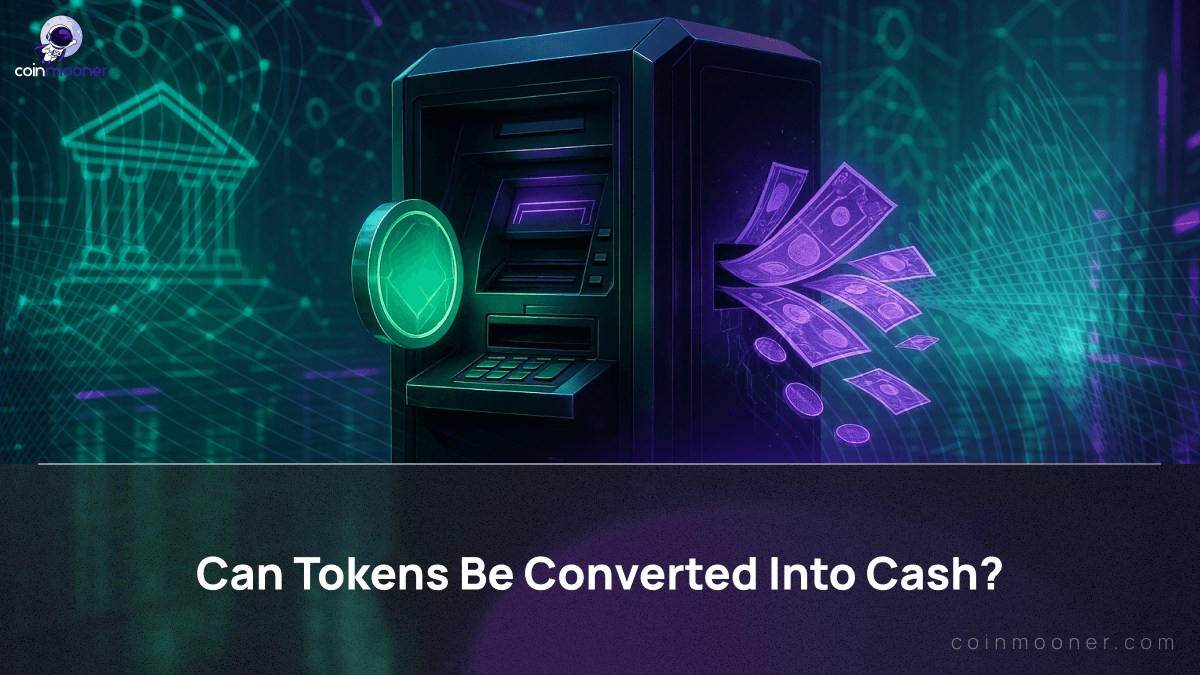
Yes, tokens can be converted into cash through cryptocurrency exchanges, peer-to-peer platforms, and payment services that support fiat withdrawals. The process depends on the type of token, liquidity, and regulatory environment of the user’s country.
Conversion through Centralized Exchanges (CEXs)
Platforms like Coinbase, Binance, and Kraken allow users to trade tokens for fiat currencies such as USD, EUR, or GBP.
Withdrawals are processed via linked bank accounts, debit cards, or third-party payment providers.
High-liquidity tokens (BTC, ETH, USDT) are easily exchangeable, while smaller tokens often require conversion into a major cryptocurrency first.
Conversion through Decentralized Exchanges (DEXs)
DEXs like Uniswap or PancakeSwap allow token swaps but do not directly provide fiat withdrawals.
Users typically convert tokens into a stablecoin (e.g., USDT, USDC) and then transfer to a centralized exchange for cash-out.
Peer-to-Peer (P2P) Platforms
P2P marketplaces connect buyers and sellers directly.
Payments can be made through bank transfers, mobile wallets, or cash in person.
This method is widely used in regions with limited exchange access but carries counterparty risk.
Crypto Debit Cards and Payment Services
Some services issue crypto debit cards that let users spend tokens directly, automatically converting them into fiat at the point of sale.
Payment providers like PayPal also allow token selling and withdrawal to fiat in certain jurisdictions.
Factors Affecting Conversion
Regulation: Countries with strict crypto laws may limit fiat off-ramps.
Liquidity: Popular tokens convert faster with lower fees.
Fees and Limits: Exchanges and payment processors impose withdrawal fees, daily limits, and compliance checks.
Conclusion
Tokens have become one of the most transformative elements of the cryptocurrency ecosystem. Unlike native coins, tokens are created on existing blockchains and designed with specific purposes from enabling payments and providing utility, to governing decentralized protocols, backing real-world assets, or representing digital ownership through NFTs. Their diversity makes them central to innovations in DeFi, stablecoin settlements, asset tokenization, and metaverse economies.
The evolution of tokens shows how blockchain technology is shifting from simple peer-to-peer payments to a multi-asset infrastructure that supports finance, governance, identity, and cross-border value exchange. Yet, with opportunity comes risk. Tokens face challenges such as regulatory fragmentation, market volatility, and cybersecurity vulnerabilities, making it essential for users and investors to approach them with careful evaluation.
As adoption grows, tokens will continue to bridge the gap between traditional finance and decentralized systems, shaping the future of digital economies. Understanding their types, functions, standards, benefits, and risks is no longer optional, it is the foundation for navigating the Web3 era with confidence and authority.

